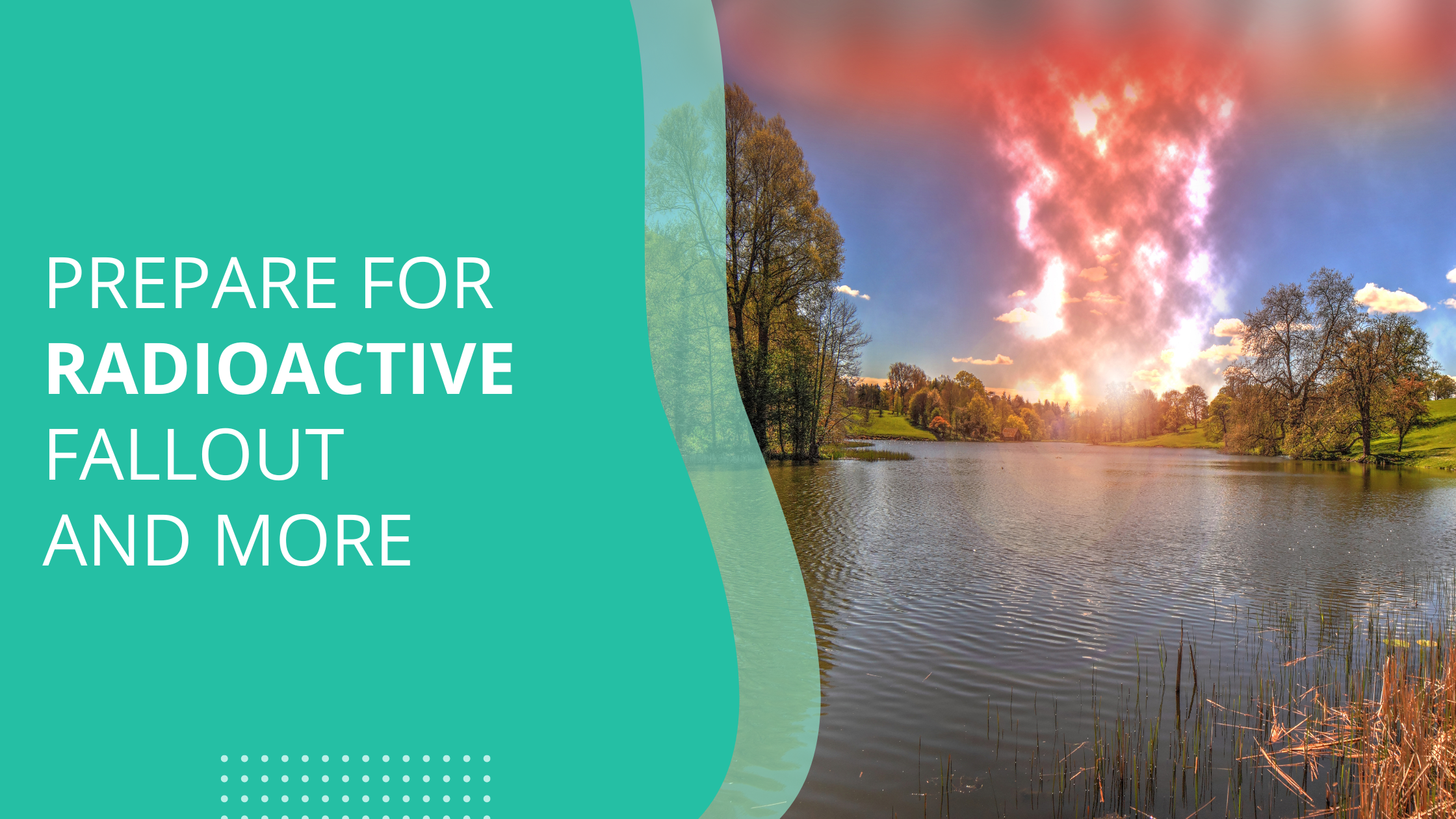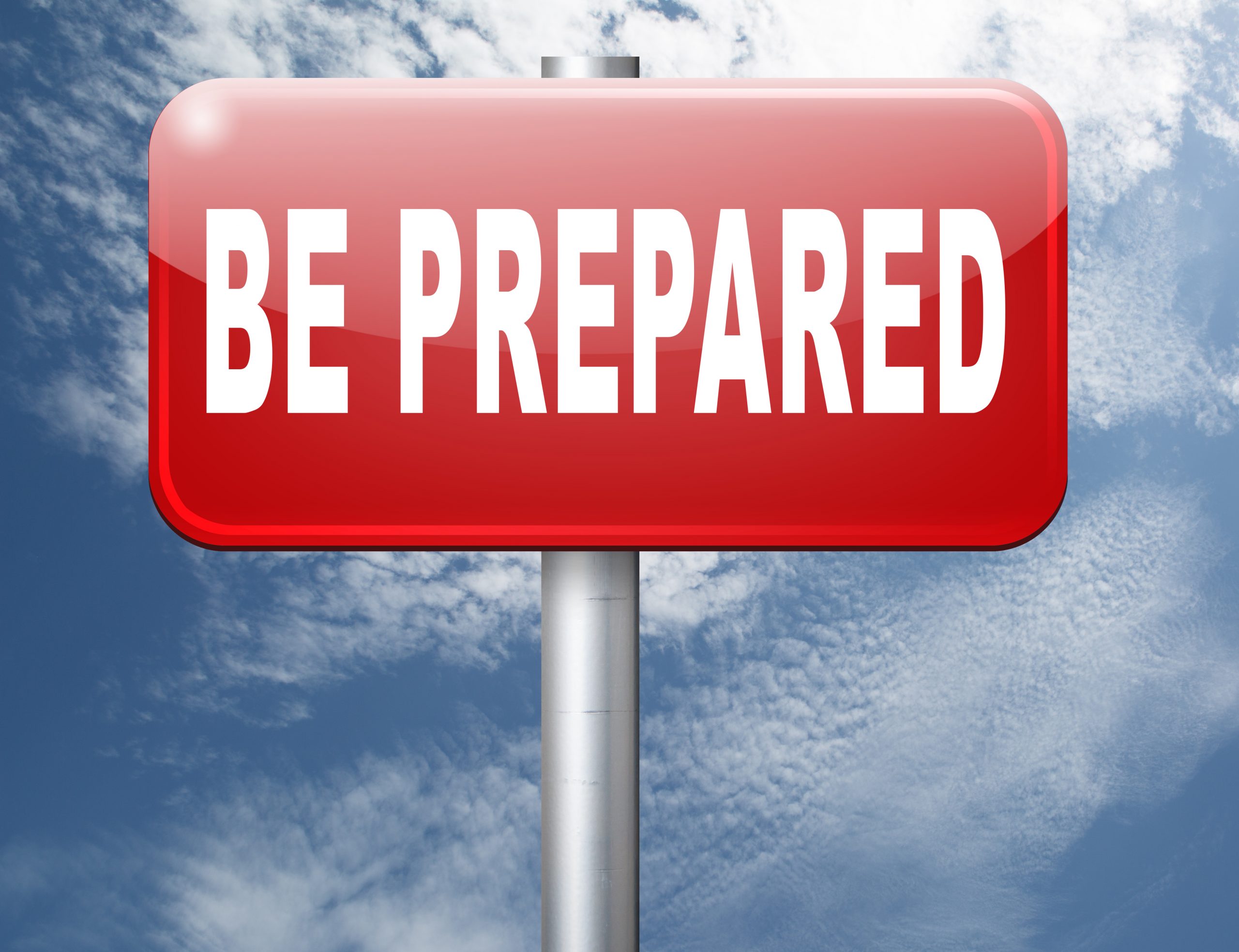
Given the current state of world affairs, we will be turning our attention to nuclear fallout and the effects on the body.
To begin with, we will delve into what you can do mitigate the effects of a nuclear explosion, through planning and education. And of course, action.
Most all nuclear events are survivable if you take time for appropriate planning and action. (Unless in direct ground zero area, which us usually an isolated area)
We have put together a downloadable pdf to help you plan and put together a nuclear survival kit. Nuclear Fallout Preparation Checklist
Let’s get started
If you see any of the following, be aware this may be the start of a nuclear event
- Bright FLASH can cause temporary blindness for less than a minute
- BLAST WAVE can cause death, injury, and damage to structures several miles out from the blast.
Steps to take if caught in a nuclear fallout area
The initial fallout following a nuclear blast is the most dangerous within the first hours. At this point the highest levels of radiation can be detected. As the radioactive fallout is carried through the air, it can take more than 15 minutes to reach ground level. Most nuclear radiation has a half life of a few days, some such as Cesium-137 half life is 30 years.
GET INSIDE
- Get inside the nearest building to avoid radiation. Brick or concrete structures, even parking garages can provide protection.
- Remove contaminated clothing and wipe off or wash unprotected skin if you were outside after the fallout arrived. Hand sanitizer does not protect against fall out. Avoid touching your eyes, nose, and mouth, if possible. Do not use disinfectant wipes on your skin. In addition, when washing, do not use conditioner in hair, it can mix with the radioactive particles and stay on the body.
- Discard or leave clothing outside where you are sheltering
- Go to the basement or middle of the building. Stay away from the outer walls and roof. The more mass between you and the outdoor elements , especially concrete and dirt the less radiation exposure.
- Cover windows, vents and doors with plastic sheeting and seal with duct tape
STAY INSIDE
- Stay inside for at least 24 hours, preferably 72 hours unless local authorities provide other instructions. In some instances, it may be necessary to remain in place up to 3 weeks. Plan accordingly
- Family should stay where they are inside. Reunite later to avoid exposure to dangerous radiation.
- Keep your pets inside. If your pets are outside during an event, bring them in after thoroughly washing them to remove any fallout particles.
- Only drink water you have stored. Radioactive fallout will contaminate water sources.
STAY TUNED
- Tune into any media available for official information such as when it is safe to exit and where you should go.
- Battery operated and hand crank radios will function after a nuclear detonation.
- Cell phone, text messaging, television, and internet services may be disrupted or unavailable.
Prepare NOW
- Identify the best shelter location near where you spend a lot of time, such as home, work, and school. The best locations are underground and in the middle of larger buildings.
- While commuting, identify appropriate shelters to seek in the event of a detonation. As you go about your day, make note of buildings and structures that may serve as shelters if you are not home at the time of a nuclear event.
- Outdoor areas, vehicles, mobile homes do NOT provide adequate shelter. Look for basements or the center of large multistory buildings.
- Download our Nuclear Fallout Preparation Checklist and put together a nuclear survival kit. Be sure to take time to educate and inform family members of your plans and what steps to take if away from home.
Effects of radiation
- RADIATION can damage cells of the body. Large exposures can cause radiation sickness. See Education series below for further information.
- FIRE AND HEAT can cause death, burn injuries, and damage to structures several miles out. (Health effects series to follow)
- ELECTROMAGNETIC PULSE (EMP) can damage electronics several miles out from the detonation and cause temporary disruptions further out.
- FALLOUT is radioactive, visible dirt and debris raining down that can cause sickness to those who are outside.
- Fallout zones- These are where the radioactive dust is picked up into high altitude winds and carried to other parts of the country. It is important to note the direction of the wind, to be aware of where fallout may be headed and avoid that area if possible.
Education Series
Body effects of radiation poisoning
This is the first in a series on the different types of radiation found in a nuclear explosion and the effects it can have on the body. The thyroid, an important organ of the body, isn’t the only organ that is affected by radiation.
We will review the different types of radiation and the body systems it can damage, and some antidotes beyond iodine that can help the body remove radiation from the body.
Phases of radiation poisoning
(Excerpts from Bruce W. Clements, Julie Ann P. Casani, in Disasters and Public Health (Second Edition), 2016):
Acute Radiation Syndrome (ARS) is one of the most challenging aspects of a public health and medical response to a nuclear or radiological incident. This condition is the result of a large exposure to a penetrating external radiation source over a short period of time. ARS includes four stages.
- A prodromal stage with gastrointestinal symptoms such as nausea, vomiting, and diarrhea can begin within minutes or days of the exposure and last up to several days.
- A latent stage follows in which the patient feels fine for a period of time ranging from hours to weeks. This latent stage is followed by a
- manifest illness stage, which includes one or more of three classic syndromes (CDC, 2005a):
- Bone marrow syndrome often leading to death from the destruction of bone marrow resulting in infections and hemorrhage
- Gastrointestinal syndrome likely leading to death from serious gastrointestinal tract damage causing infections, dehydration, and electrolyte imbalance.
- Cardiovascular/central nervous system syndrome leading to death within a few days from circulatory system collapse and increased intracranial pressure from edema, vasculitis, and meningitis.
The final stage is either recovery or death. The entire process can take from a few weeks to a couple years.
The chart on the website provides additional details beyond the scope of this post
- Brooke Lounsbury
Medical Content Writer
Healthcare tip of the week
Eat your mushrooms!
As summer draws to a close, our supply of naturally occurring vitamin D from sun exposure starts to wane. However, there is one food source that, when exposed to the sun contains over 100 percent of our vitamin D RDA- mushrooms! An experiment performed at Fungi Perfecti by placing shitake mushrooms, gills up (before sun exposure contained 40 IU per 100 grams) for 12 hours in sunlight produced 46,000 IU per 1200 grams vitamin D4 (the precursor to vitamin D3, the more bioavailable form of vitamin D) The vitamin D content is retained for up to a year after exposure. Fascinating!
Pick up your Jase Case now if you haven’t done so:
The Jase case covers a broad variety of infections, from urinary tract infection to bacterial pneumonia. With the fragile supply chain which doesn’t seem to be getting any better anytime soon, it would be prudent to pick up a Jase case for each member of your family, which is health insurance in today’s unstable world.
Prep tip- what have you done to prepare this week?
Pick out one project that will bring you closer to medical readiness and do it this week. If it is a large project, break it into phases and tackle it. Every day and effort you put into your personal health preparedness brings you closer to navigating a failing healthcare system.
“Setting goals is the first step in turning the invisible into the visible.” — Tony Robbins
Lifesaving Medications
Recent Posts
Keeping you informed and safe.
FAQ: Our most commonly asked questions about Jase
If you’re considering Jase, chances are you’ve paused and thought, “This makes sense, but I still have a few questions.”You’re not alone. Here are the most common ones we hear, answered plainly. Is this really doctor-prescribed? Yes. Every Jase order is reviewed by a...
Medical Readiness: What Really Kills First
When Disaster Strikes, It’s Not Hunger or Thirst That Takes the First Lives In every disaster zone, from hurricanes in the Caribbean to war zones in Ukraine, the pattern is the same. People worry about food and water, but it’s infection that kills first. A small wound...
Exploring Dr. William Makis’ Hybrid Orthomolecular Cancer Protocol: Focus on Ivermectin and Mebendazole/Fenbendazole
Exploring Dr. William Makis’ Hybrid Orthomolecular Cancer Protocol: Focus on Ivermectin and Mebendazole/Fenbendazole *Disclaimer: This article is for educational purposes and does not constitute medical advice. Always seek professional guidance.* In the evolving...






